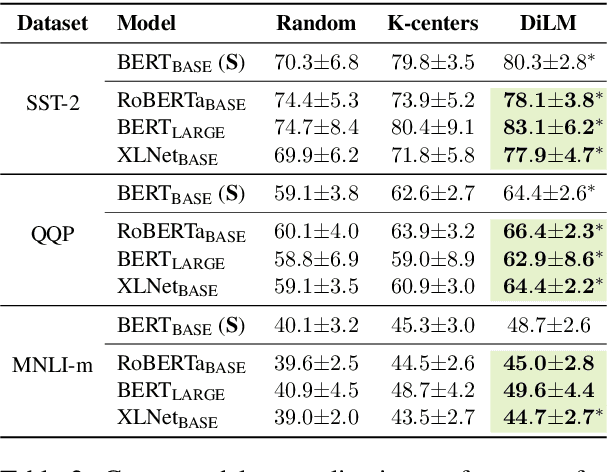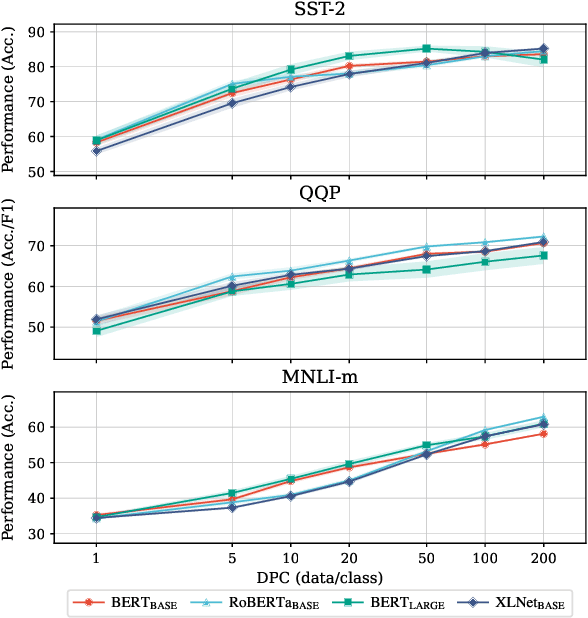Aru Maekawa
DiLM: Distilling Dataset into Language Model for Text-level Dataset Distillation
Mar 30, 2024



Abstract:Dataset distillation aims to compress a training dataset by creating a small number of informative synthetic samples such that neural networks trained on them perform as well as those trained on the original training dataset. Current text dataset distillation methods create each synthetic sample as a sequence of word embeddings instead of a text to apply gradient-based optimization; however, such embedding-level distilled datasets cannot be used for training other models whose word embedding weights are different from the model used for distillation. To address this issue, we propose a novel text dataset distillation approach, called Distilling dataset into Language Model (DiLM), which trains a language model to generate informative synthetic training samples as text data, instead of directly optimizing synthetic samples. We evaluated DiLM on various text classification datasets and showed that distilled synthetic datasets from DiLM outperform those from current coreset selection methods. DiLM achieved remarkable generalization performance in training different types of models and in-context learning of large language models. Our code will be available at https://github.com/arumaekawa/DiLM.
Can we obtain significant success in RST discourse parsing by using Large Language Models?
Mar 08, 2024Abstract:Recently, decoder-only pre-trained large language models (LLMs), with several tens of billion parameters, have significantly impacted a wide range of natural language processing (NLP) tasks. While encoder-only or encoder-decoder pre-trained language models have already proved to be effective in discourse parsing, the extent to which LLMs can perform this task remains an open research question. Therefore, this paper explores how beneficial such LLMs are for Rhetorical Structure Theory (RST) discourse parsing. Here, the parsing process for both fundamental top-down and bottom-up strategies is converted into prompts, which LLMs can work with. We employ Llama 2 and fine-tune it with QLoRA, which has fewer parameters that can be tuned. Experimental results on three benchmark datasets, RST-DT, Instr-DT, and the GUM corpus, demonstrate that Llama 2 with 70 billion parameters in the bottom-up strategy obtained state-of-the-art (SOTA) results with significant differences. Furthermore, our parsers demonstrated generalizability when evaluated on RST-DT, showing that, in spite of being trained with the GUM corpus, it obtained similar performances to those of existing parsers trained with RST-DT.
 Add to Chrome
Add to Chrome Add to Firefox
Add to Firefox Add to Edge
Add to Edge